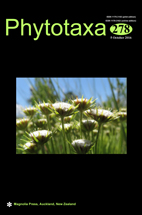Abstract
Strains of Tetraselmis, a genus with systematic and biotechnological interest and one of the most prominent genera in marine phytoplankton, were studied. Five strains of T. verrucosa f. rubens, a taxon first documented in coastal lagoons of Greece, are examined herein under a multivariate approach i.e. in relation to their morphological variability under light and transmission electron microscopy (LM and TEM, respectively), and taking into account certain molecular and biochemical attributes as taxonomic markers, including the plastid-encoded rbcL and nuclear-encoded 18S rRNA gene sequences, and the fatty acid profile. The molecular markers were used to verify the phylogenetic position of the strains within the genus Tetraselmis and the class Chlorodendrophyceae. For that purpose, the original Tetraselmis verrucosa f. rubens isolate (CCAP strain 66/6) was included in the analysis. The molecular data are in agreement with the classification based on morphology. The five strains grouped firmly together and formed a monophyletic group with the original T. verrucosa f. rubens isolate. Lipid analysis of the strains was performed using the FAME (Fatty Acid Methyl-Ester) method and the resulting profile might be used as an additional taxonomic marker.

